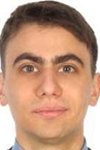Core Contributors
Sleep and circadian regulation of glymphatic function: the role of neuromodulators in perivascular flow
Techniques: In vivo imaging, Recovery rodent surgery, Sleep and circadian behavioral analysis,
Molecular techniques, Whole cell patch clamp
The impact of behavioral state on vascular pulsatility
Our aim is to understand the relationship between vascular diameter, pulsatility, and slow vasomotion in native conditions and during functional hyperemia. Recordings are being taken in awake, asleep and optogenetically stimulated mice. A greater understanding of these vessel dynamics will give us greater insight into drivers of glymphatic fluid dynamics.
Techniques: Thin skull, Cranial window, Stereotaxic craniotomy, IV injection, Vessel analysis (pulsatility, diameter, slow vasomotion), In-vivo recording, Optogenetic stimulation
Quantifying Pericapillary and interstitial fluid flow in vivo
Ouraim is to test whether there is preferential fluid flow along small capillaries of the mouse brain. We are utilizing newly developed viral vectors to label interstitial fluid and cerebrospinal fluid with fluorescent protein, and imaging these proteins in vivo with 2-photon microscopy. Understanding these flows will give insights into the organization of fluid flow in the brain with relevance to neurodegenerative disease.
Techniques: Stereotaxic viral infection, chronic cranial window, 2-photon imaging, immunohistochemistry, Confocal imaging, Macroscopic imaging
Perivascular fluid transport changes with brain state and pathological conditions
Our aim is to determine how brain state transitions modulate CSF flow in periarterial spaces and characterize the changes of periarterial CSF transport related to pathological conditions such as hypertension and Alzheimer's disease. To investigate CSF dynamics, we will use in vivo two-photon microscopy and particle tracking velocimetry to track fluorescent microspheres in the perivascular spaces and measure CSF flow of live mice. Two photon imaging will also be used to extract measurements of the arterial wall motion.
Techniques: Cranial Window, thin skull, IV injection, CM injection, 2-photon imaging, Macroscopic Imaging



















